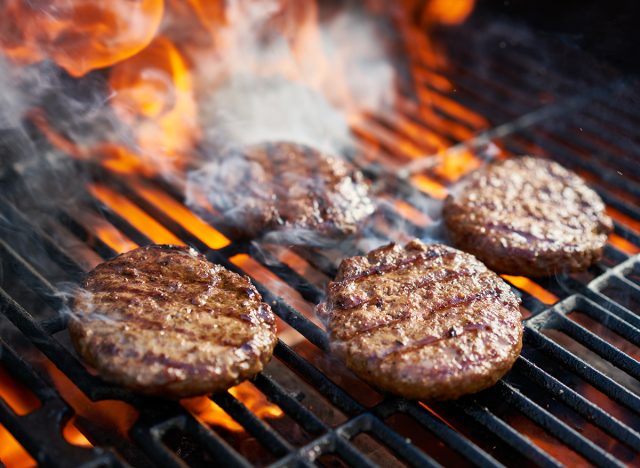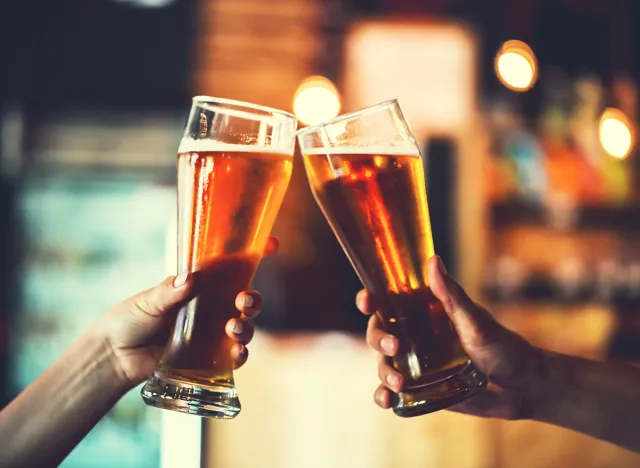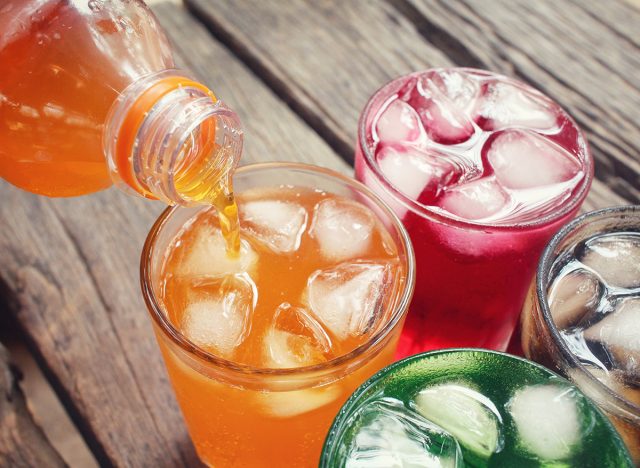5 Essential Ways to Build Muscle From a Nutritionist

So, you have decided that you want to get into shape. Before you plan out your diet and workout routine, you need to figure out your body goals. Do you want to simply lose weight? Or do you want to build muscle? If it's the latter, there are a few foods you will need to eat and some you will want to avoid, according to Kaytee Hadley, MS, RDN, IFMCP, CPT functional medicine dietitian and founder of Holistic Health and Wellness.
You Need to Eat Protein

Hadley explains balancing your macronutrient intake of fat, carbohydrates, and protein is important for anyone looking to build muscle, "but protein's role is particularly important," she says. "When muscles are challenged with resistance training, they are able to recover optimally from the strain and grow strongly accordingly only when given enough of this key nutrient."
Related: How to Lose Weight If You Can't Work Out
But Also Avoid Inflammatory Foods

However, there is more to it than protein. "Inflammation also plays a role in muscle gain and eating a diet full of inflammatory foods can impair progress," says Kaytee.
You Also Need to do Resistance Training

But it's not just your diet. "The biggest mistake people make is believing the myth that simply eating protein will help you gain muscle, when in fact muscle growth comes from resistance training," Kaytee explains. "Eating protein helps your body repair more quickly so you can continue gaining muscle – you need both the exercise and the protein together. Without adequate resistance training, excess protein can be stored as fat in the body just like carbohydrates, so it's important to tailor your protein intake to your individualized needs," she says. If you are strength training and hoping to build muscle, she recommends eating between 1.2 to 1.6 grams of protein per kilogram of your body weight or 0.55 -0.75 grams of protein per pound of body weight.
Avoid Alcohol

Now, food and drinks to avoid. "Alcohol may be the biggest hindrance to your muscle gains," she maintains, citing research. "Alcohol often leaves you hungover with low energy and unable to listen to hunger cues and can also metabolically interfere with your muscle growth."
Avoid Fried Foods

And, just say no to greasy, fried food. "Fried foods are not only correlated to levels of obesity and weight gain due to their caloric density, but they are also pro-inflammatory which can impair muscle recovery," Kaytee explains.
Related: Gabby Dawn Allen Shares Post-Surgery Fitness Workout
Don't Drink Anything Sugary

Another "hidden threat "to your goals could be sugary beverages, "from overly sweetened lattes or classic soft drinks," says Kaytee. "These sweet drinks can not only increase inflammation but have also been shown to be negatively correlated with muscle growth."
💪🔥Body Booster: While amping up protein intake is key when it comes to building muscle, avoiding inflammatory food and drinks is also important to prep your body for gains. And if you enjoyed this article, take advantage of these 15 Quick Ways to Lose Body Fat Percentage in a Week.




